SE15 is Peckham, not the most attractive inner suburb but somewhere which has some interesting things to see nonetheless.
We start our walk at Peckham Post Office which is at 121 – 125 Peckham High Street.
Fascinating fact: According to the wonderful Cinema Treasures site, there was once a cinema here. The Gem Picture Playhouse was opened in late 1908 or early 1909. But it had a brief life – closing in the Summer of 1916, so this is way beyond the memory of anyone living today.
Turn left out of the Post Office and head along the High Street.
Our first stop is just after Marmont Road
Stop 1: Gaumont House
Now as the name suggests this was also the site of a cinema.
In fact, according to Cinema Treasures, there was a theatre here first. This was the Crown Theatre opened in October 1898 as a music hall. It was soon renamed Peckham Hippodrome Theatre, becoming a variety theatre. But in July 1911, it became a full time cinema, known as the Hippodrome Picture Palace. It was taken over by Gaumont British Theatres in November 1926, who closed it in December 1928 in order to use the site for a larger purpose built cinema.
The new cinema opened in February 1932 as the Gaumont Palace. It was built at a diagonal angle to the site, with the entrance on the corner of Peckham High Street and Marmont Road and seated some 2,500.
The Gaumont closed as a cinema in January 1961 and was the first Rank Organisation cinema to be converted into a Top Rank Bingo Club, opening in May 1961.
Bingo continued until 1998. The building was demolished in the summer of 2002, and a block of flats ‘Gaumont House’ was built on the site, with commercial space on the ground floor, which is today used by the NHS.
Return along the High Street and just past the Post Office you will see a small side street called Mission Place. Go down here to see our next stop which is just on the right
Stop 2: Orchard Mission
Peckham was a poor area back in the 19th century as can be deduced from this next stop.
This building has a plaque announcing ‘Orchard Mission Founded 1887’ with the intertwined initials of the Ragged School Union.
This is an unusual name for a Mission. The attached link
http://www.exploringsouthwark.co.uk/orchard-mission/4592566220
has the following by way of explanation:
“At the end of the 19th century, the street was known as Blue Anchor Lane and extended north to Goldsmith’s Road. At the northern end were a row of houses and gardens known as The Orchard, probably built on land that had once been an orchard. The Mission was founded in 1887 by a group of evangelical young men who held open air services in the warm summer months, known as Flower Services, but as the weather got cooler, a four room cottage was rented. This may have been in one of the houses in The Orchard, giving rise to the name of the Mission.”
Although the Mission was founded in the 1880s, this actual building is later opening in 1906.
They seemed to have concern about encroachment on their property, judging by the other stone.
Not sure when the street got renamed Mission Place or what exactly the building is used for today.
Now return to the High Street and turn right. Our next stop is just at the next junction (Peckham Hill Street)
Stop 3: Manze’s Pie and Mash shop, Number 105 Peckham High Street
Here we have another of those few surviving pie and mash shops.
Manze seems to be a common name for these shops. We saw one in Walthamstow and there is one in Deptford but they were started by different members of the family and have since their separate ways.
The story of this one is explained on this link
http://manze.co.uk/index.php?app=gbu0&ns=display&ref=splash&sid=z0ito48o35y0lt11xnm14dtzn7h6446a
as follows:
“Michele Manze arrived in Britain from a picturesque hillside village called Ravello in Southern Italy. His family made the long trek over in 1878, when Michele was just 3 years old.
The Manze family settled in Bermondsey and began trading as ice-merchants, turning later to ice-cream makers. Realising the need for more substantial food in post-Victorian London, Michele branched out into the pie, mash & eels trade.
The first shop to bear his name opened in 1902, shortly after his marriage to Ada Poole, whose first husband, Edward Poole, had died in 1891. This shop was at 87 Tower Bridge Road, Bermondsey. He went on to open his second shop at 250 Southwark Park Road, Bermondsey in 1908, and two further shops in Poplar, which were lost during World War Two. His Fifth and final shop at 105 Peckham High Street was opened in 1927.
Several of Michele’s brothers followed his lead, and by 1930 there were a total of 14 pie, mash & eel shops in London bearing the Manze name. Many of these shops have since closed down or been taken over.
Michele Manze died in 1932 and his son, Lionel, took over the running of the two surviving shops – Tower Bridge Road and Peckham High Street. In 1985, the shop at Peckham was burnt down during the riots in the area. A long legal battle ensued and Lionel, sadly, did not live long enough to see the outcome. He died in 1988, whereupon his three sons, Graham, Geoff and Richard inherited not only Tower Bridge shop, but also the legal battle. They survived on the business of Tower Bridge Road until they were able to re-build and re-open the Peckham shop in 1990, although the legal battle did not conclude until 1995.”
There is a Southwark Borough blue plaque but curiously it is inside the shop.
Now head along Peckham Hill Street for a short distance and soon on the left you will see our next stop along a pedestrian way.
Stop 4: Peckham Library
The newish building on the right is Peckham Library. It was designed by Alsop and Störmer and won the Stirling Prize for Architecture in 2000. It is a striking building but its impact is rather spoilt by the roof that has been put over part of the square.
This little square was built on the end basin of the Grand Surrey Canal which ran from here (and also from Camberwell) to the Thames. Originally the canal was to extend further into Surrey but it only reached Camberwell in 1810 and Peckham in 1826. By the 1830 railways were seen as the way forward and indeed the route of the nearby Croydon Canal was used by a railway as we saw in SE4.
Interestingly the basin here continued mainly for movement of timber until well into the 20th century. But it went into terminal decline after the Second World War and it seems it was closed completely by the early 1970s.
But you can follow the line of the former canal north from here along a linear park.
You can get a nice view of the Shard from here.
Head across the open space in front of the library and you will be back at the High Street. turn right and go a little way along past the junctions of Rye Lane, Bellenden Road and Collyer Place. Our next stop is on the left.
Stop 5: Numbers 20 – 26 Peckham High Street
We are stopping by this uninspiring commercial building because this was the site of another big cinema.
This was the Odeon and like the Gaumnont along the road, it had been built on the site of a previous place of entertainment. The one here was the Queen’s Hall, later Queen’s Picture Theatre which dated from 1914. This had been purchased by Odeon and was closed at the end of 1937 to be demolished. The new Odeon Theatre seating 2,110 opened in July 1938.
Designed by noted cinema architect, Andrew Mather, the facade was unusual. It was faced in cream glass panels, with horizontal green glazed bands and a central recess over the entrance, which had four free standing pillars which originally supported the Odeon name sign. The four free standing pillars were removed from the facade in the 1960s.
In January 1974, it was converted into a triple screen cinema. The Odeon was taken over by an independent operator in November 1981 and renamed Ace Cinema. That lasted just over two years, closing in December 1983. The cinema was demolished in May 1985. The office block built on the site dates from 2008.
Now return along the High Street and our next stop is ahead on the right at the junction of Rye Lane.
Stop 6: Former Jones and Higgins Department store and Aylesham Centre
This striking corner building with its clock turret is all that is left of a department store called “Jones and Higgins”. The store opened in Rye Lane in 1867 and gradually expanded to become a major presence. It seems to have been an independent store and somehow managed to survive until around 1980. But more information than that I have struggled to find.
Next door is the Aylesham Centre which was built on part of the site of the store. The centre seeks to impress with its entrance but it is quite small with just one arcade of shops on a single level. Most of it is taken up by a branch of Morrisons supermarket.
Why this is called the Aylesham Centre I have no idea. Maybe it has something to do with the village of Aylesham, in Kent. This was established in 1926 to house miners working in the East Kent coal mines. It seems odd to think there were coal mines in Kent but there were. Coal was discovered in the 1890s and was mined here until the 1980s.
Keep going along Rye Lane, past Primark and the Rye Lane chapel. Just before the railway bridge look out for a courtyard on the left.
Peckham may have lost its impressive 1930s super cinemas, but it does have a working cinema here in a building which had previously been a Sainsbury’s supermarket
This originally opened as the Premier Cinema in September 1994. However they went bust in 2003 and another independent operator reopened it in May 2003 as the Peckham Multiplex. It was renamed PeckhamPlex in December 2015 and I believe it is still independently run. Its long term future was in doubt because of redevelopment plans but it seems that the cinema is not about to disappear just yet.
http://www.peckhamplex.london/news/londons-most-creative-car-park-set-to-stay-in-heart-of-peckham
Keep going along Rye Lane. Our next stop is just after the first railway bridge.
Stop 7: Peckham Rye station
Sitting between the two railway bridges over Rye Lane, on the right you will see this rather messy building. But go down that arcade to see our next stop, Peckham Rye station.
You may be surprised to learn, this is listed as one of Simon Jenkins 100 best railway stations in Britain. (It is a great book by the way, I got a copy for Christmas)
But once you get to it, Peckham Rye station is rather grand. As Simon Jenkins says:
“Peckham Rye station is a phoenix still hiding in its ashes. It lurks behind a near derelict shopping arcade…The local council has long been intending to restore the area in front of the building but has yet to do so. When it does, the old facade should emerge in all its Victorian glory.”
In the meantime the glory explodes in front of you as you emerge from the tatty arcade.
It is an odd station because it is in effect two stations side by side on different brick viaducts. One side was opened by the London, Chatham and Dover Railway in December 1865 and the other by the London Brighton and South Coast Railway in August 1866.
But between the two lines they shared a single main building. It was designed by Charles Henry Driver (1832–1900) who was the architect of Abbey Mills and Crossness pumping stations as well as being responsible for Denmark Hill and Battersea Park stations on the line in from here to Victoria.
If you go up to the platforms, they are rather a disappointment, and not at all conducive to a good interchange station.
Now return to the street and turn right. Go under the second railway bridge and go down a little alley way on the left.
Stop 8: Bussey building
George Gibson Bussey (1829–89), born in Ripon, Yorkshire, was a prolific inventor and developer of sports and leisure equipment, including pneumatic rifles, tennis racquets, clay pigeon machines. He also designed furniture that converted into a billiard table!
Bussey moved his company to Peckham in around 1870. His firm’s business was described as “Firearms, Ammunition & Shooting”. The building here was called the Museum Works and the building had a rifle range at the rear extending along the side of the railway embankment for 150 yards.
More about the history of the building at:
http://www.exploringsouthwark.co.uk/the-bussey-building/4588614792
By the early 21st century, the building was used as multi-occupier artist and design studios and small industries. In 2007 it was earmarked to be demolished and the site set to become a tram depot for the proposed cross river tram service from Camden to Peckham and Brixton. But that was cancelled by incoming Mayor Boris Johnson in 2008 and shows no sign of being revived, so I guess the site is safe for now.
Now return to the street and turn left. Our next stop is just here on the left.
Stop 9: former Holdrons department store
This building was Holdrons department store.
Henry Holdron began trading in Rye Lane around 1882 and over the years the store grew. In the 1930s this rather magnificent building was put up.
Holdrons became part of the Selfridges subsidiary, Selfridge Provincial Stores, and then it was briefly owned by John Lewis being one of 15 shops acquired from Selfridges in 1940. It was closed in 1948. Long before the other big names closed their shops here.
Most of the old store is now taken up by Khan’s Bargain, a sort of low rent Woolworths if that is possible. The name Holdrons lives on in the Holdrons Arcade where there are around 20 small business in a kind of corridor – arcade is perhaps too grand a word for their setting.
Now a little further along Rye Lane, you will see a side street called Choumert Road. Go down here. Past the market area on your right you will come across a rather nice little terrace of 19th century cottages. This is our next stop.
Stop 10: Girdlers Cottages
Girdlers Cottages were built in 1852 as almshouses by the Palyn Charity, but are now owned privately.
As we have found in other places, the various City Livery Companies owned and managed housing around London. As one might guess this group had a connection to the Girdlers Company.
According to their website:
“The Company, which was involved with the making of girdles (or belts), received its Letters Patent from Edward III in 1327. While it no longer practises its craft – although it has the honour of presenting the girdle and stole worn by the Sovereign at each coronation – it remains a Company closely connected with the government and Livery Companies of the City of London, the fellowship of its members and various charitable works.”
“The Girdlers’ almshouses owe their existence to bequests by Past Masters Cuthbert Beeston (1582) and George Palyn (1610). Beeston’s property was sold in the 1830s and the money used to build almshouses in Peckham. Palyn’s almshouses were originally built in Finsbury but replaced by further almshouses in Peckham in 1852. Altogether these were on separate sites in Consort Road, Montpelier Road and Choumert Grove, but following a number of amalgamations and rebuildings, the almshouses have been consolidated on the Consort Road site since 1980, where 17 units provide accommodation for over 20 residents.”
More info at:
http://www.exploringsouthwark.co.uk/girdlers-cottages/4588956439
Retrace your steps to the Rye Lane and turn right.
We will pass the site of the former Tower cinema – all that is left is this tower which forms an entrance to a car park.
More about this cinema – and the nearby Tower Annex at the wonderful Cinema Treasures site:
http://cinematreasures.org/theaters/26454
Keep walking along Rye Lane and our next stop is at the junction as the road veers to the right.
Stop 11: Co-operative House
This is a modern building called Co-operative House.
But look to the right and you will see three dates: 1868, 1932 and 2008
You may recall from our wander round SE13 Lewisham that there was a former Co-op store there which had two dates on it – the first being 1868 which is the date of the formation of the society which went on to become the Royal Arsenal Co-operative Society. The other was 1933 the date of that building. Here in SE15 we have 1932, so I guess that is the date of the Co-op store which stood here. And 2008 is the date of the current building.
Not entirely surprising that there is no longer a major store here given the decline of Peckham as a shopping street and the fact we are right at the end. But the strip we have walked from the High Street to here must have been quite an impressive centre in its heyday.
Keep walking along the main road.
Stop 12: Number 8 Phillips Walk
As you go down the main road, it opens out with a green which is the start of Peckham Rye. It turns out this was common land. And it is still undeveloped today as in 1868 the vestry of Camberwell St Giles bought the Rye to keep it as common land.
You will see a side street to the left, called Philips Walk. Go down there and our final stop is soon on the right – at Number 8.
Here we have another Southwark Borough blue plaque. this time commemorating engineer and designer, Edward Turner (1901 – 1973)
Turner was one of the most important players in the development of designs for motorcycle engines and later also developed a version of the Daimler V8 engine for cars.
He lived here because this was next door to his father’s bottle brush factory. The plaque was unveiled by his son Edward Junior on 25 October 2009. His two other children were present.
Here is an interesting piece about Turner’s story and his place in motorcycle history.
http://sumpmagazine.com/edward-turner-plaque.htm
We have now reached the end of our SE15 walk. Peckham has some interesting things in particular some ghosts of former glory as a major shopping area. But it is shabby and sadly run down and it is hard to see how it is going to change anytime soon.
For your onward travel it is probably best to retrace your steps along the main road to Peckham Rye station where there are plenty of trains, or else you can pick up one of the numerous buses that serve Peckham.

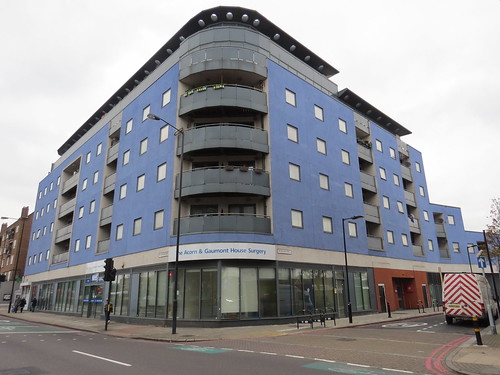

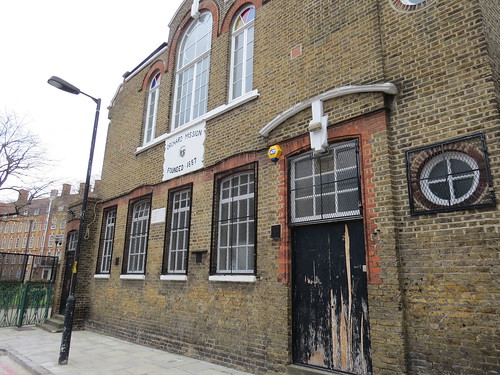
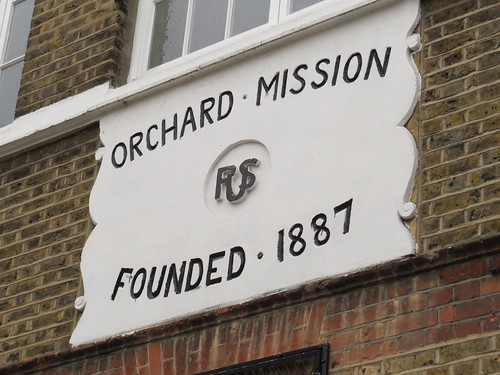


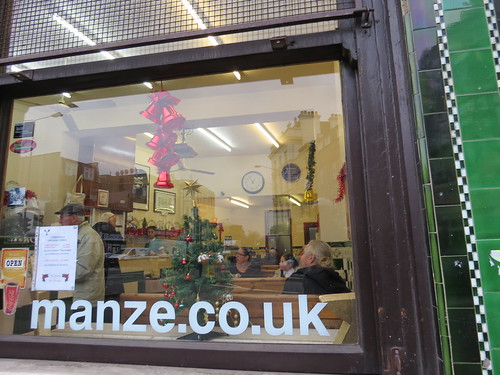



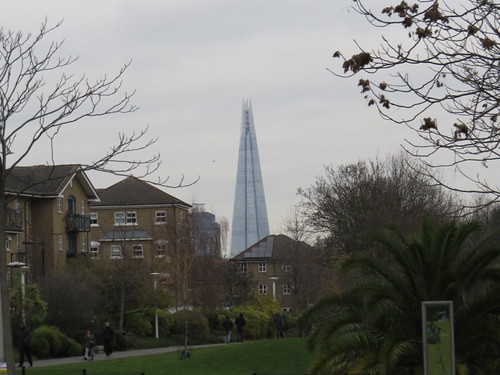


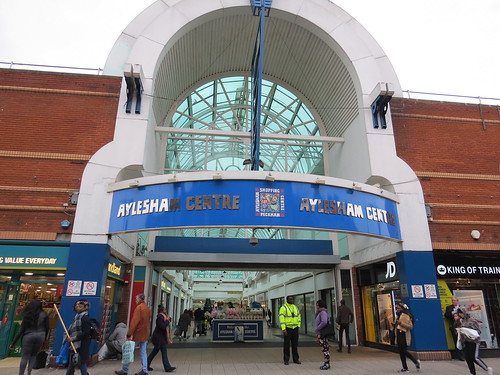
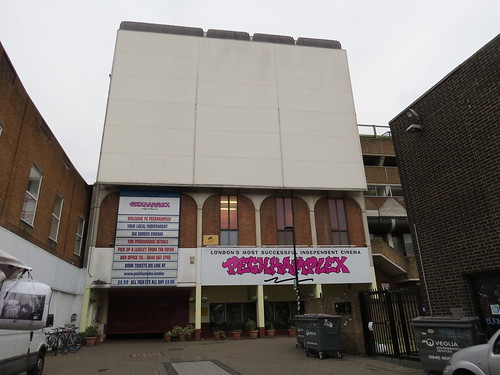

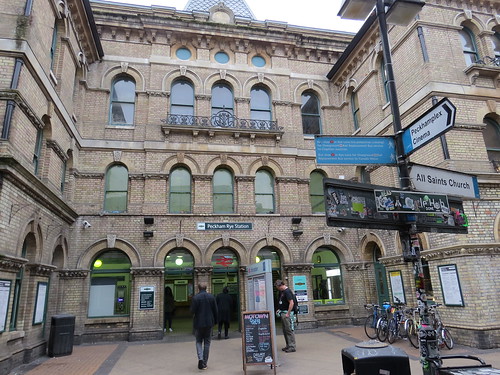
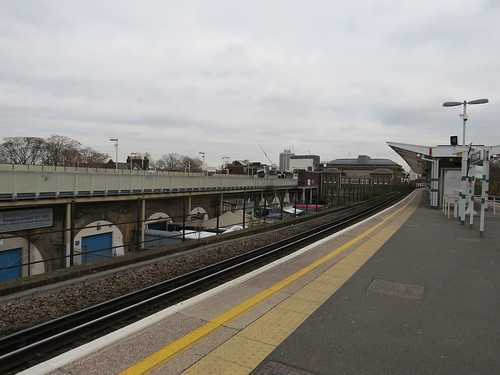
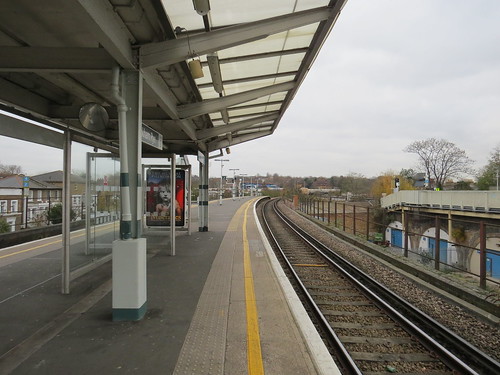
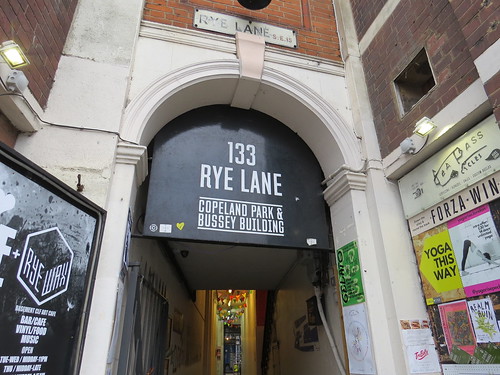

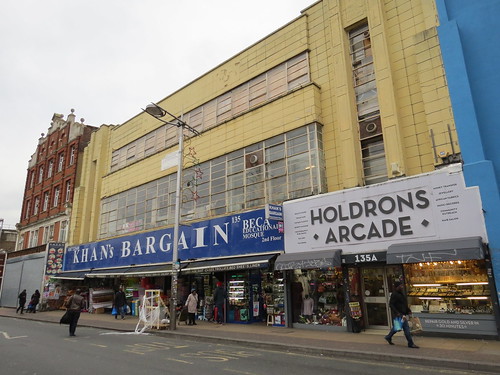

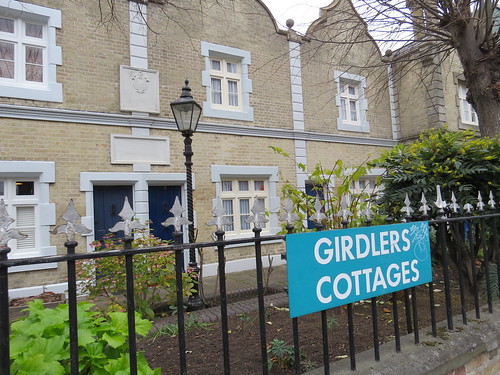

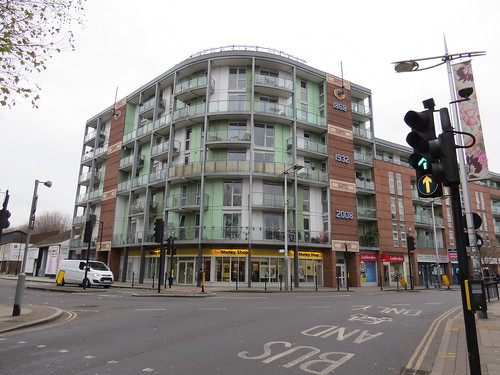

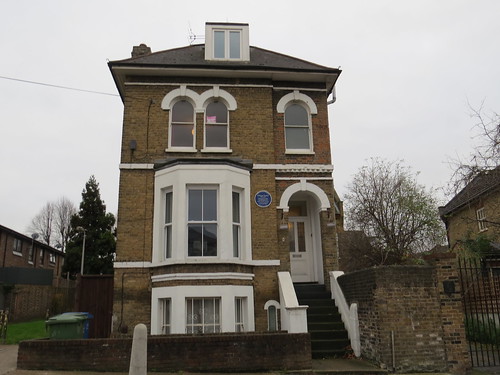

Very interesting.
I’m intrigued about the legal battle over the Manze shop – a quick google didn’t bring up anything, do you have a reference to this ?
Thanks
The reference to the legal battle is a direct quote from Manze’s own website. But that is all there is. I suggest you ask them!
thanks Stephen
What a fascinating walk around Peckham. I worked at Jones & Higgins between 1970 and 1973 and at that time it was part of the Great Universal Stores group (GUS) and this relationship continued until the shop’s closure. Jones & Higgins was established as a drapery at 3 Rye Lane, which was immediately next to that part of the building that still stands. There was a plaque on the original building indicating its early use. Taking over a number of other premises along Rye Lane, the store frontage eventually ran very near to Hanover Park. It was once described as Greater London’s greatest store. Indeed, in 1934, William Margree described Rye Lane as “the Oxford Street of South London” and argued that as a shopping street it certainly had no rival outside Central London. However, by 2003 Rye Lane was voted the fourth worst street in London.
Another place worth mentioning, almost opposite Mission Place, is Bull Yard. This was where from 1876, Thomas Tilling housed the vehicles and horses for his horse-drawn omnibus service which had been running every 15 minutes from Peckham Rye (King’s Arms) down Rye Lane to Gracechurch Street since 1851. In 1905 Bull Yard became the first motor bus garage in London – the first motor vehicles running between Peckham and Oxford Circus (now route 12). Bull Yard was fire bombed on 22 October 1940 when 48 buses including eleven of the twelve brand new TF class private hire coaches, all withdrawn due to wartime fuel savings, were lost. The replacement garage finally opened on 2 May 1951 but this was closed in 1994, being replaced itself by the present open air bus station.
An interesting walk, but a shame you didn’t explore the Rye or include the magnificent Pugin designed church of Our Lady of Sorrows on Friary Road.